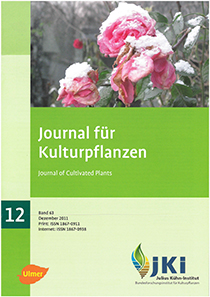<em>Galega orientalis</em> – a new persistant plant as fodder crop and substrate for biogas production
DOI:
https://doi.org/10.5073/JfK.2011.12.03Keywords:
Caucasian goat’s rue, fodder galega, Galega orientalis, legumes, fodder crops, energy cropsAbstract
A long-term cultivation trial was established to estimate the agricultural potential of the perennial legume Galega orientalis (Lam.) in Mecklenburg-Western Pomerania. Herbage productivity was monitored for four years. The average annual dry-matter yield of fodder galega was about 10 t ha–1. This legume species was found to be very resistant to frost. Drought induces reduced growth, however there is no danger of dead loss. Diseases or pests were not observed. The plants reliably accomplished seed maturity. Laboratory experiments demonstrated that galega can be ensiled successfully according to the common principles of ensiling. The fermentation batch tests demonstrated the suitability for bio-energy production. Our results indicate that galega is suitable for cultivation under the natural conditions of Mecklenburg-Western Pomerania.
Downloads
Published
Issue
Section
License
The content of the journal is licensed under the Creative Commons Attribution 4.0 License. Any user is free to share and adapt (remix, transform, build upon) the content as long as the original publication is attributed (authors, title, year, journal, issue, pages).
The copyright of the published work remains with the authors. The authors grant the Journal of Cultivated Plants, the Julius Kühn-Institut and the OpenAgrar repository the non-exclusive right to distribute and exploit the work.







